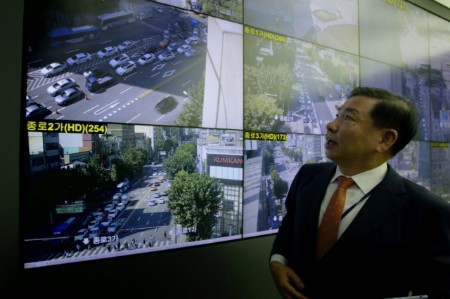From mobility to jet engines to personal shopping, why is “everything as-a-service” so popular?
Why is “everything as-a-service” so popular? Minimal up-front costs, maximum flexibility and personalization – it ticks all the boxes. Mobility as-a-service lets you summon a car and pay for it from your smartphone. Leasing jet engines (and other expensive assets that lie idle much of the time) is becoming a growing revenue stream for equipment manufacturers. And personal shopping as-a-service lets you opt into an algorithm that selects new outfits, saving you a trip to the mall.
We've entered an age when digital innovation is pushing us into new and often unexpected directions. A transformative age, where the speed of change, high levels of uncertainty, the rise of consumer power and advanced technology are making new ways of connecting businesses and society possible.
But… we're also witnessing more polarization than before, with growing rifts in societies and governments and people who feel left behind by globalization. Increasingly, there is a digital divide between those with access and those without. Established, successful companies are experiencing shorter lifespans as new entrants win over their customers and put them out of business.
So what's your experience of digital innovation? Is it proving to be more of a friend, or a foe?
Digital innovation: friend or foe?
I believe innovation can be a catalyst for inclusive growth. As the world faces more challenging, complex problems, we need to bring new thinking to old problems.
Colombia is a great example of this, where 13,000 cast iron pay phones have been turned into micro-savings accounts for the underprivileged. People left out of the financial services system can now deposit their coins into payphone bank accounts, pay utilities or buy public transport tickets.
So yes, I do think digital innovation can be a friend. But only if you're willing to do three things:
1) Disrupt yourself
As the saying goes, disrupt or be disrupted. From bookstores to mobile phones to retailers, we've all read stories of those who failed to rise to the challenge of disruption.
Start by thinking about your past year. Where have you seen the biggest disruptions? How can you learn from these successes and do business differently? What new partners could you collaborate with to make it happen?
What I'm hearing from leading companies across industries and geographies is this: collaboration is the new innovation. You have to be open to new voices and fresh thinking. City governments are increasingly collaborating with new groups to tackle the pressures of rapid urbanization, aging infrastructure, congestion and air pollution. The city of Seoul, South Korea, which has a population density twice that of New York, is a great example of this. It invested in sophisticated technology and extensive collaboration with groups spanning emergency services, military bases, local government and street vendors. The end result? The ability to adjust the speed and frequency of public transport in real time, as well as give drivers real time alerts and alternative routes on the roads.
2) Fundamentally change your business model
We see this in retail where the mass marketing model is clearly no longer fit for purpose. From 2011 to 2016, large US consumer products players (worth more than US$5b) lost US$21b of market share to more agile, smaller independent companies. As a result, retailers are re-positioning their brands into one of three categories: discount, high end or direct to consumer (as a service).
Across other industries, new models are turning the linear value chains of old on their heads. The common theme is putting customers at the heart of the value chain, and cutting out the middlemen. For example, EY and blockchain specialist Guardtime are collaborating with A.P. Møller-Maersk A/S and others to create the world's first marine insurance blockchain platform. The new platform streamlines and automates interactions, dramatically reducing time, cost and risk across the entire insurance value chain.
3) Reskill and diversify your workforce
The next wave of disruptive technology — AI, robotics, virtual reality, IoT and sharing economy platforms — will displace jobs and the way we work to an enormous degree. This requires taking a fresh look at how we structure jobs.
Many see a greater demand for “free thinkers” and liberal arts education as robots develop and obtain the edge in programming and engineering. Personally, I think we will continue to need both sets of skills – technical skills on the digital side combined with creative and relationship skills to make innovation happen.
Ignore digital innovation at your peril
Here are some questions for leadership teams to consider:
- How do we build a better working world in a world with less work?
- How should governments and businesses address income inequality?
- How will we keep workers and citizens motivated in the machine economy?
- Do we have the skills we need to enable continued digital innovation?
Related article
Resumen
Organizations need fresh thinking to turn digital disruption into an opportunity for inclusive growth.


